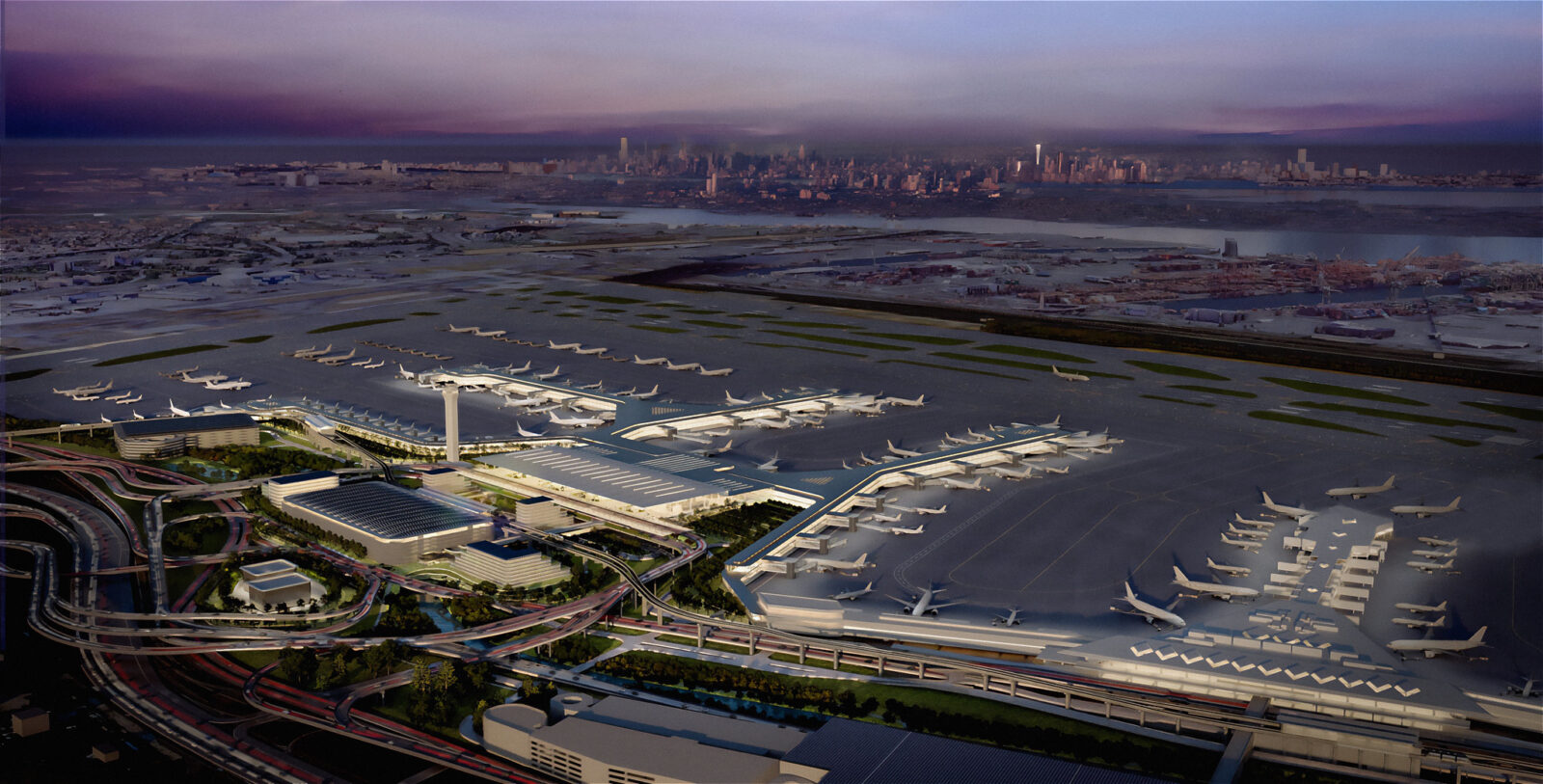A Vision Plan for Newark Liberty International Airport was recently introduced by the Port Authority of New York and New Jersey, with an overhaul and redesign of Terminal B taking center stage.
The 96-year-old airport completed a $2.7 billion renovation of Terminal A in 2022 that has since won multiple awards, including Skytrax World’s Best New Terminal. Terminal A was the PANYNJ’s largest single investment in New Jersey and it was the state’s largest design-build project.
“Newark Liberty Airport serves as the gateway for millions of passengers, offering them their first welcome to the great state of New Jersey,” said Gov. Phil Murphy. “The EWR Vision plan will solidify Newark Liberty’s status as a premier regional and international transportation hub. This transformation will not only enhance passenger service but also strengthen the airport’s role as a key economic driver for New Jersey and the surrounding region.”
The EWR Vision Plan sets the airport on a course of continued development over the coming decades to accommodate passenger growth with modern, world-class terminals on par with the reconstruction of LaGuardia Airport and John F. Kennedy International Airport.
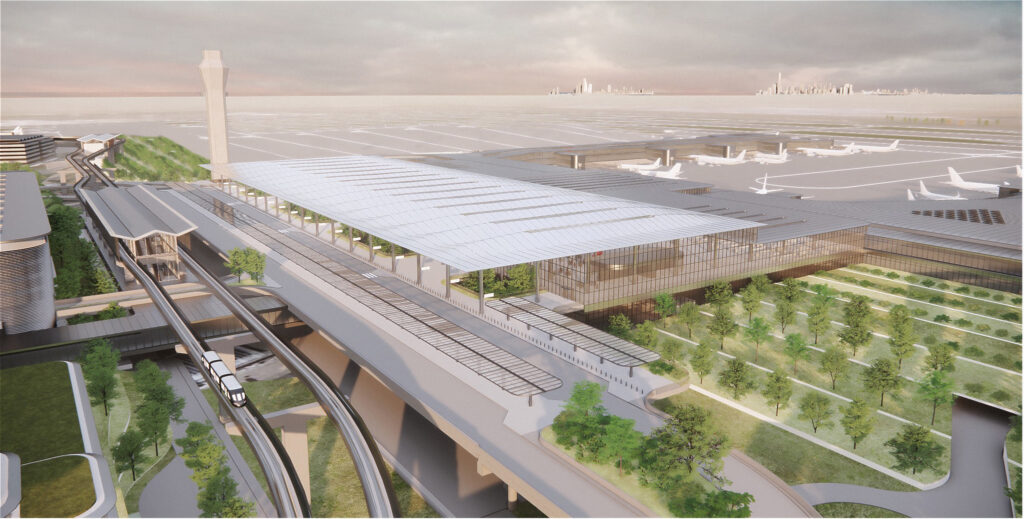
The EWR Vision Plan was developed in partnership with design firm Arup and architecture firm Skidmore, Owings & Merrill. It charts a comprehensive reimagining of the airport, complete with modern terminals and infrastructure, a more intuitive roadway network, and a redesigned taxiway network to accommodate more aircraft and reduce delays.
The blueprint enables the airport to handle future growth, while serving the evolving needs of passengers, airlines, and the surrounding community. It was developed following extensive outreach to airport tenants, operational partners, and the public.
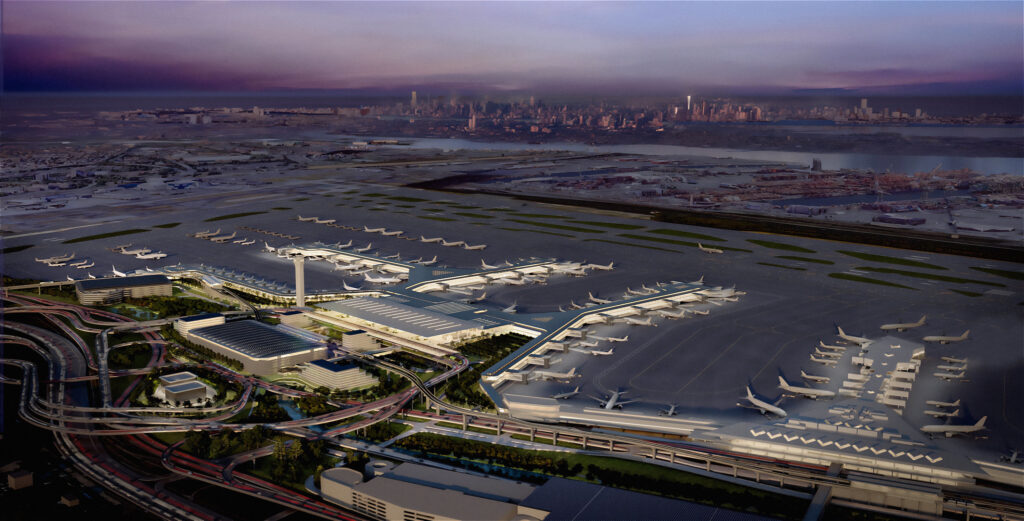
“A modern, efficient, world-class Newark Liberty Airport is more than just a dream. We now have an actionable path forward thanks to this comprehensive vision plan,” said Port Authority Chairman Kevin O’Toole. “As the blueprint shows, we’re ready to take a top-to-bottom look at everything from terminals to roadways to taxiways as we build EWR into a best-in-class global gateway and position it to continue serving as a vital economic engine for New Jersey and the region.”
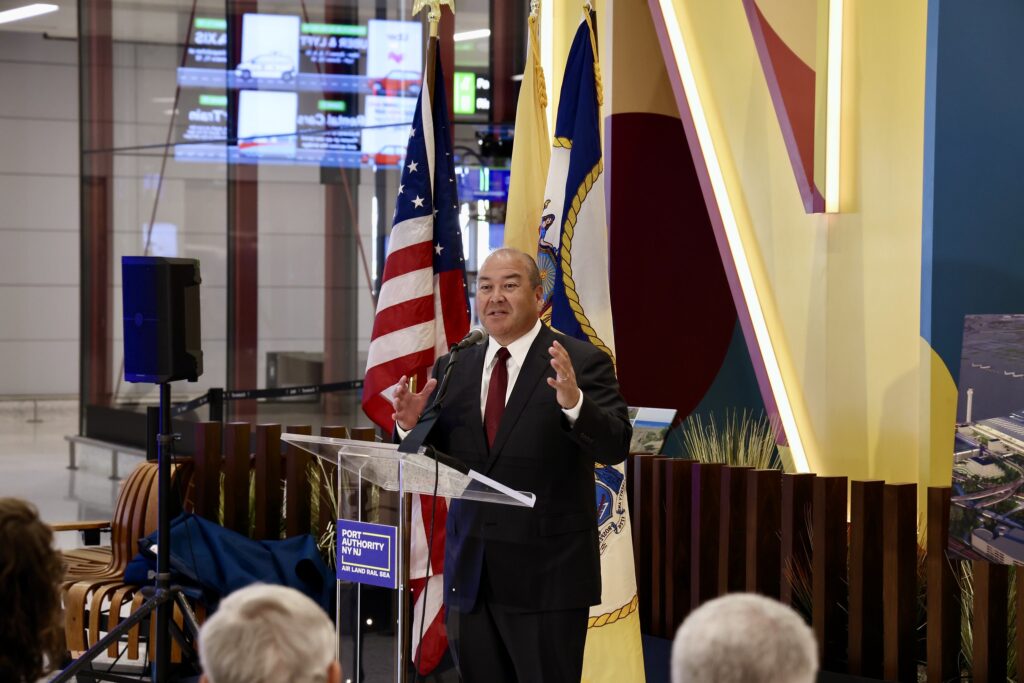
“Newark’s Terminal A is an extraordinary terminal built for modern air travel, and we are thrilled to release the EWR Vision Plan, which lays out a blueprint to transform the airport to accommodate future growth and provide a 21st century travel experience at all of Newark Liberty’s facilities,” said Port Authority Executive Director Rick Cotton. “We’re fortunate to build on many prior successes and lessons learned from the redevelopment of our other two major airports as we embark on this comprehensive reimagining of Newark Airport, prioritizing efficiency, sustainability, and the modern, streamlined experience our customers expect.”
“The Vision Plan provides a roadmap to reimagine Newark Liberty International Airport as a world-class facility,” said Jacquelene McCarthy, Port Authority director of aviation redevelopment. “Our goal is to enhance passenger experiences, improve operational efficiency, and ensure that the airport reflects the culture and diversity of New Jersey.”
“Newark Liberty Airport is New Jersey’s front door to the world,” said U.S. Rep. LaMonica McIver (New Jersey). “This forward-thinking Vision Plan ensures it will be a world-class hub for global trade, tourism, and business for generations to come, while continuing to drive economic growth and jobs for New Jersey residents and the entire region. Along with modernizing and enhancing the customer experience from curb to gate, the plan also advances the Port Authority’s commitment to sustainability and reducing carbon emissions, making it a huge win on all fronts.”
“The Vision Plan builds on the goal to revitalize all aspects of the Newark Liberty International Airport, establishing it as a global gateway and economic driver for New Jersey. This plan aims to elevate the airport to world-renowned status, prioritizing the passenger experience, airport operations, and greater access and opportunities for the state,” said New Jersey State Senate Majority Leader M. Teresa Ruiz. “By improving train accessibility for underserved neighborhoods and integrating local businesses into terminal upgrades, we are committed to ensuring that these enhancements are equitable and reflect the vibrant culture of our community. This is just one piece of our region’s continued transportation infrastructure transformation, and I thank the Port Authority of New York and New Jersey for their efforts to position EWR as a dynamic and reliable international travel hub.”
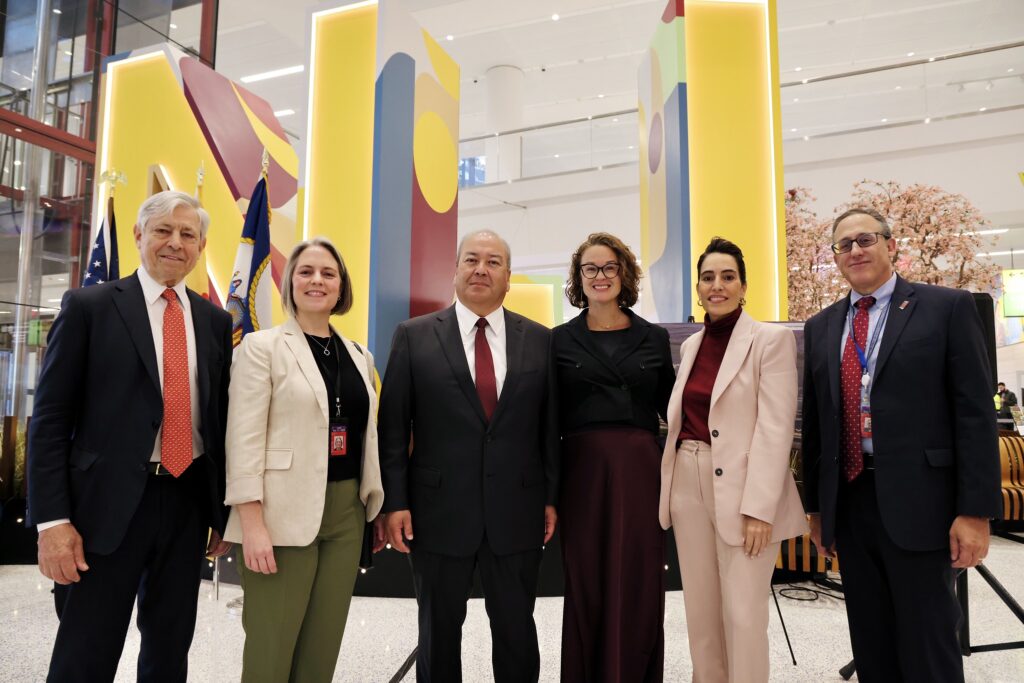
“As someone who has represented Newark for years, I am thrilled to see the Port Authority’s commitment to enhancing Newark Liberty International Airport through the EWR Vision Plan,” said Assemblywoman Eliana Pintor Marin (D-Essex). “This not only builds on the success of Terminal A but also lays the groundwork for future growth and improved passenger experiences. The redevelopment will solidify EWR’s role as a vital economic engine for our city and region, while also creating new opportunities for local businesses and residents. Guided by this blueprint, we can elevate the greater Newark area’s status as a premiere destination and a global entry-point into the United States.”
“As a local resident and proud representative of Elizabeth, I’m excited about the reimagining of Newark Liberty International Airport and the positive impact it will have on our community,” said New Jersey State Assemblymember Annette Quijano. “This vision plan not only elevates the airport’s standing as a world-class gateway but also strengthens our local economy by creating job opportunities and improving transportation access for residents. The focus on sustainability and efficiency ensures that we are building for the future while honoring the needs of our neighborhoods.”
The EWR Vision Plan represents a comprehensive blueprint for the future of the 96-year-old airport. Much of its current infrastructure dates to the 1970s, when terminals B and C and the original Terminal A were built. Today, the airport’s legacy infrastructure struggles to meet the needs of modern air travel. This is especially true as the airport’s passenger volume grows. A record 49 million passengers passed through the airport in 2023. Major recurring issues, including insufficient terminal capacity, congested roadways, and airside delays often lead to inefficient operations and a subpar passenger experience.
Through the vision plan, the Port Authority aimed to accommodate future growth while delivering a world-class experience from curb to gate. The vision plan pursues a phased approach, minimizing the impact on airport operations while fostering new business opportunities for the local community. The enhancements would also provide new opportunities for the Port Authority to advance the agency’s industry-leading sustainability efforts, furthering its commitment to reach net-zero carbon emissions by 2050 while assisting its operational partners in achieving the same goal.
The plan aimed to build on the success of the airport’s new Terminal A, the recipient of several industry accolades including its recognition as the best new airport terminal in the world by the preeminent global airport evaluation firm Skytrax. The plan also incorporates ongoing modernization projects at the airport, including the replacement of the airport’s AirTrain system with a state-of-the-art automated system and a new access point to the Newark Liberty International Airport Rail Station for underserved neighborhoods in the cities of Newark and Elizabeth.
Major elements of the EWR Vision Plan
- Terminal development: Modern, engaging, and comfortable terminals that reflect their communities are at the heart of the EWR Vision Plan. The plan calls for building a new, world-class international terminal to replace the current Terminal B, while enhancing Terminal C to improve the customer experience. Both would complement the airport’s award-winning new Terminal A that opened in January 2023, which could also see further expansion. The spacious, streamlined terminals would allow the airport to accommodate continued growth in passenger volume, while leaving space for further expansion as needed.
- Airside development: The plan envisions improving the airport’s operations with a more efficient and resilient taxiway network, while accommodating the industry trend toward larger aircraft. The new network would increase parking capacity and flexibility for aircraft, while creating redundancies to minimize delays during irregular operations. It incorporates additional deicing facilities, allowing aircraft to push off from gates more quickly. It would also include the industry’s latest safety standards, increasing straight taxiway segments and minimizing the need for crossings.
- Landside development: The blueprint looks to transform the airport’s vehicular and multi-modal access, prioritizing efficiency and convenience for all users. Alongside terminal buildings, frontages would be expanded to meet industry standards, providing ample space for passenger waiting, loading and unloading while minimizing walking distances. AirTrain access would be simplified, while connectivity and amenities for cyclists, pedestrians, and service vehicles would be improved. The roadway network would also be streamlined to reduce decision points and separate major flows with independent circulation for each terminal.
The Port Authority expects to begin a two- to three-year planning process in 2025 for major elements of the redevelopment, including cost projections and project delivery alternatives.
About Port Authority airport redevelopments
In 2015, a comprehensive plan to construct a whole new LaGuardia Airport was unveiled with the goal of creating a world-class, 21st century passenger experience featuring modern customer amenities, state-of-the-art architecture, more spacious gate areas and a unified terminal system. The $8 billion project broke ground in 2016 and was substantially completed in 2022.
In January 2017, the JFK Vision Plan was announced to transform JFK into the world-class airport that New Yorkers deserve. The vision plan provides a strategic framework for the Port Authority and its partners to completely redevelop, modify and expand existing facilities and infrastructure.
The $9.5 billion development of a state-of-the-art New Terminal One that will anchor the airport’s south side broke ground in September 2022. A new $4.2 billion Terminal 6, which will connect seamlessly with Terminal 5 to create an anchor terminal on the airport’s north side, broke ground in February 2023.
The $1.5 billion expansion of Terminal 4, led by Delta Air Lines and JFK International Air Terminal (JFKIAT), is substantially complete. Additionally, the $400 million expansion of Terminal 8, led by American Airlines, which operates the terminal, was completed in November 2022. All of the privately financed terminal projects combined with the Port Authority’s roadway, parking and infrastructure projects represent a $19 billion transformation of JFK and an extraordinary series of public-private partnerships.
About The Port Authority of New York and New Jersey
The Port Authority of New York and New Jersey is a bi-state agency that builds, operates, and maintains many of the most important transportation and trade infrastructure assets in the country.
For over a century, the agency’s network of major airports; critical bridges, tunnels and bus terminals; a commuter rail line; and the busiest seaport on the East Coast has been among the most vital in the country – transporting hundreds of millions of people and moving essential goods into and out of the region.
The Port Authority also owns and manages the 16-acre World Trade Center campus, which today welcomes tens of thousands of office workers and millions of annual visitors. The agency’s historic $37 billion 10-year capital plan includes unprecedented transformation of the region’s three major airports – LaGuardia, Newark Liberty and JFK – as well as an array of other new and upgraded assets, including the $2 billion renovation of the 90-year-old George Washington Bridge.
The Port Authority’s annual budget of $9.3 billion includes no tax revenue from either the states of New York or New Jersey or from the City of New York. The agency raises the necessary funds for the improvement, construction or acquisition of its facilities primarily on its own credit.







